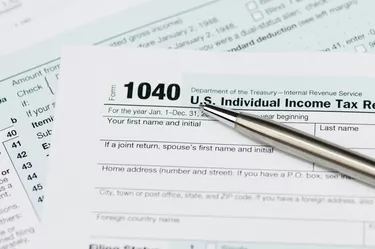
When it comes to being paid, the saying that "it's better late than never" certainly applies. But don't get too excited if you've received retroactive pay -- unfortunately, Uncle Sam will still want his cut. On the positive side, calculating and paying the taxes on retroactive pay is a pretty straightforward affair.
Taxes on Retroactive Pay
Video of the Day
For the purpose of taxation, the IRS considers retroactive pay as wages for the year in which they were paid. For instance, if in 2014 you are paid retroactively for work you did in 2013, it's considered income for 2014. Your employer should give you a W-2 form for these back wages. Add these wages to the amount you earned in the year you received the back pay. Put the combined number on line 7 of IRS Form 1040 when filing your tax return. Treat retroactive wages as you would ordinary wages when calculating your taxes.
Video of the Day
An Example
For example, assume that you worked for a company in 2013, but the company miscalculated your hours and only paid you for some of your work. The company sent you retroactive pay of $3,000 in 2014 when the mistake was discovered. You would add this $3,000 to your salary for 2014. For instance, if you earned a salary of $60,000 in 2014, add the $3,000 to that for a total of $63,000. Enter $63,000 into line 7 of IRS form 1040 to calculate your taxes.